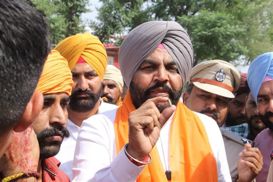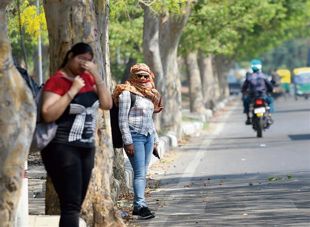
The stické tennis court at IIAS is now a badminton court.
Raaja Bhasin
In 1947, most British nationals in the country left. Of the ones that stayed back, some were officials who would remain as long as India had dominion status — which continued till January 26, 1950, when India became a Republic. Others were businessmen like tea planters and a few industrialists — most of whom were based in and around Kolkata and Mumbai. Scattered across the country, there were several teachers and missionaries attached to various schools. With time, the majority also moved away. When the former colonials returned to Britain, many were in for a shock. Some had spent generations in the Indian sub-continent and had minimal connections with the ‘mother country’. The devastation of the Second World War and Hitler’s bombardment had left many of Britain’s cities in ruins or severely damaged. (Even in India, the Taj Mahal had been camouflaged as a precaution against Japanese bombing). After their rather lavish colonial lifestyles in India, Africa and elsewhere, many of these ‘reverse migrants’ were unable to settle in what, for the moment, was not ‘a green and pleasant land’. Several left to finally make their homes in Australia and Canada.
Sometime in the late 1950s and 1960s, others came to India from Britain. While some still sniffed around for the privileges of the British Raj, most were different in their ways of thinking and functioning. For one, they knew that Britain no longer ‘owned’ India — a word used in this context by the writer Percy R Salmon in 1920. They also came relatively free of prejudice. To them, India was simply a place to work, make friends, have some happy years and then, go back. Many did. Of the connections that one has made with this substantially different set of expats, one is with Barry and Sylvia Williamson, who came to Shimla to teach at Bishop Cotton School. They had left by the time I was sufficiently over the ground to go to school, but through other connections, we have become good friends. Barry, who taught history, once handed his pupils a map of Shimla when it was the summer capital of India. He asked them, looking at the map, to describe the lives of the British living in Shimla. One rather precocious student, with what must have been a good head for figures, counted the number of tennis courts and cemeteries and came back with the answer, “The British came to Shimla to play tennis and die.”
As Shimla changed and successfully reduced itself to a messy backwater, among the first places to vanish were the tennis courts that stood by practically every large house. In the former Viceregal Estate, which now houses the Indian Institute of Advanced Study, the grass courts have been converted into gardens. Close to these, there is one little secret that probably missed the eye of that discerning student, for this was, perhaps, the only indoor tennis court in India.
Viceregal Lodge in Shimla owes its presence to the British Viceroy, Lord Dufferin. He had come to India after serving as the Governor-General of Canada. On the northern edges of the vast estate in Shimla, he set out to build a copy of the indoor tennis court that he had built in 1875 in Canada. Called stické (pronounced as ‘sticky’) tennis, this form of the game combines regular lawn tennis with ‘real’ or ‘royal’ tennis. This is also substantially different from the game that we easily recognise. Today, ‘real’ or ‘royal’ tennis is largely unknown and less than 50 courts remain in the world.
Stické tennis is believed to have been invented in England in the 1870s more for recreation, rather than competition, for military officers during their long and often remote service postings. Stické courts could easily be erected in military areas, because they were smaller than the alternative ‘rackets’. They were made of wood, which could be recycled in packing cases, and artillery targets — both of which were easily dismantled and obtained.
When Dufferin set out to create what he had built in Canada, the original measurements were mistaken and resulted in a smaller court. The upshot was that when side ‘penthouses’, critical to the game, were added, the result was too narrow for a ‘four-handed’ or doubles game. The equipment was simple — lawn tennis racquets and standard-sized, low-pressure tennis balls, that were low impact and soft. The original balls were 2½ inches in diameter and composed of soft, uncovered ‘India rubber’. Players, either singles or doubles, faced each other over the net. The net had a dip in its centre.
Over the years, the origins of this court and how the game was played have been forgotten. But at one time, this court in Shimla and the one in Canada became what was described as “…an essential part of the fabric of social interaction between British officials and the local politicians and ruling families in Canada and India”.
In pristine condition, the court in Shimla has been adapted as a badminton court. Unlike the observation of the bright spark at Bishop Cotton School, here, tennis may have been played, but to the best of my knowledge, was not responsible for subsequent additions to the cemeteries.
Join Whatsapp Channel of The Tribune for latest updates.




























